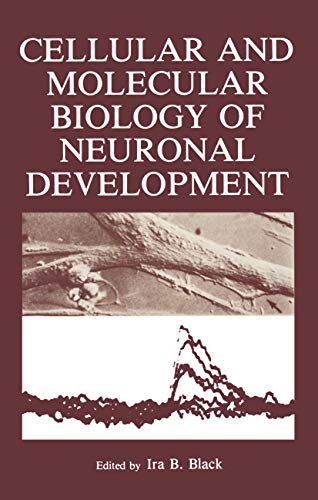Articoli correlati a Cellular and Molecular Biology of Neuronal Development

Le informazioni nella sezione "Riassunto" possono far riferimento a edizioni diverse di questo titolo.
Le informazioni nella sezione "Su questo libro" possono far riferimento a edizioni diverse di questo titolo.
- EditoreSpringer
- Data di pubblicazione2011
- ISBN 10 1461296862
- ISBN 13 9781461296867
- RilegaturaCopertina flessibile
- Numero di pagine392
Compra nuovo
Scopri di pi¨ su questo articolo
Spese di spedizione:
GRATIS
In U.S.A.
I migliori risultati di ricerca su AbeBooks
Cellular and Molecular Biology of Neuronal Development by Black, Ira [Paperback ]
Descrizione libro Soft Cover. Condizione: new. Codice articolo 9781461296867
Cellular and Molecular Biology of Neuronal Development
Descrizione libro Condizione: New. Codice articolo ABLIING23Mar2716030030775
Cellular and Molecular Biology of Neuronal Development
Print on DemandDescrizione libro Condizione: New. PRINT ON DEMAND Book; New; Fast Shipping from the UK. No. book. Codice articolo ria9781461296867_lsuk
Cellular and Molecular Biology of Neuronal Development
Descrizione libro Paperback / softback. Condizione: New. This item is printed on demand. New copy - Usually dispatched within 5-9 working days. Codice articolo C9781461296867
Cellular and Molecular Biology of Neuronal Development
Descrizione libro Paperback. Condizione: Brand New. 389 pages. 9.25x6.10x0.89 inches. In Stock. Codice articolo x-1461296862
Cellular and Molecular Biology of Neuronal Development
Descrizione libro Taschenbuch. Condizione: Neu. Druck auf Anfrage Neuware - Printed after ordering - A central problem in neurobiology concerns mechanisms that generate the pro found diversity and specificity of the nervous system. What is the substance of diversification and specificity at the molecular, cellular, and systems levels 4 How, for example, do 1011 neurons each form approximately 10 interconnec tions, allowing normal physiological function How does disruption of these processes result in human disease These proceedings represent the efforts of molecular biologists, embryologists, neurobiologists, and clinicians to approach these issues. in this volume are grouped by subject to present the varieties The chapters of methods used to approach each individual area. Section I deals with embry ogenesis and morphogenesis of the nervous system. In Chapter 3, Weston and co-workers describe the use of monoclonal antibodies that recognize specific neuronal epitopes (including specific gangliosides) for the purpose of defining heterogeneity in the neural crest, an important model system. Immunocyto chemical analysis reveals the existence of distinct sUbpopulations within the crest at extremely early stages; cells express neuronal or glial binding patterns at the time of migration. Consequently, interactions with the environment may select for predetermined populations. Le Douarin reaches similar conclusions in Chapter 1 by analyzing migratory pathways and developmental potentials in crest of quail-. Codice articolo 9781461296867
Cellular and Molecular Biology of Neuronal Development
Descrizione libro Condizione: New. Codice articolo 4192179
Cellular and Molecular Biology of Neuronal Development
Descrizione libro Codice articolo STOCK09098998
Cellular and Molecular Biology of Neuronal Development
Descrizione libro Taschenbuch. Condizione: Neu. This item is printed on demand - it takes 3-4 days longer - Neuware -A central problem in neurobiology concerns mechanisms that generate the pro found diversity and specificity of the nervous system. What is the substance of diversification and specificity at the molecular, cellular, and systems levels 4 How, for example, do 1011 neurons each form approximately 10 interconnec tions, allowing normal physiological function How does disruption of these processes result in human disease These proceedings represent the efforts of molecular biologists, embryologists, neurobiologists, and clinicians to approach these issues. in this volume are grouped by subject to present the varieties The chapters of methods used to approach each individual area. Section I deals with embry ogenesis and morphogenesis of the nervous system. In Chapter 3, Weston and co-workers describe the use of monoclonal antibodies that recognize specific neuronal epitopes (including specific gangliosides) for the purpose of defining heterogeneity in the neural crest, an important model system. Immunocyto chemical analysis reveals the existence of distinct sUbpopulations within the crest at extremely early stages; cells express neuronal or glial binding patterns at the time of migration. Consequently, interactions with the environment may select for predetermined populations. Le Douarin reaches similar conclusions in Chapter 1 by analyzing migratory pathways and developmental potentials in crest of quail- 392 pp. Englisch. Codice articolo 9781461296867

